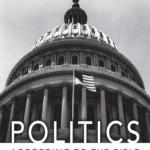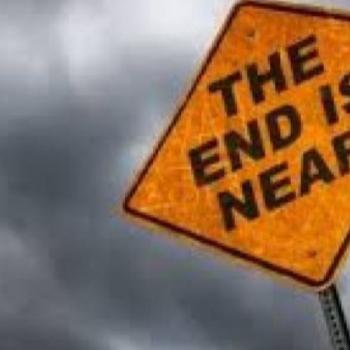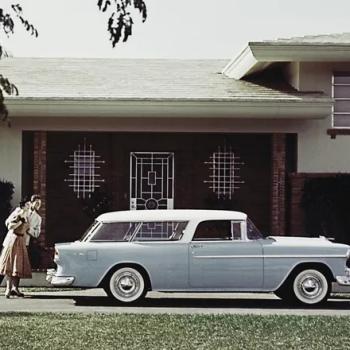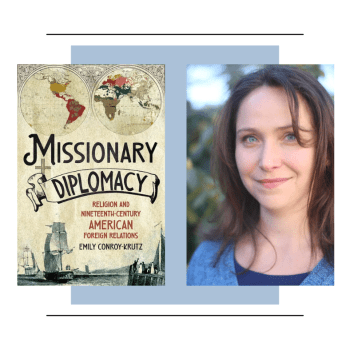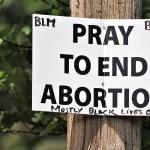What happens when a religious establishment implodes? In his magisterial Darkness Falls on the Land of Light, Douglas Winiarski traces the maturation and then collapse of New England’s Congregational order.
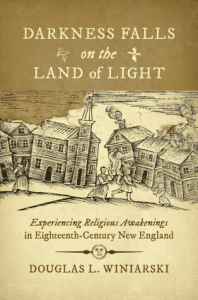 Winiarski begins with the “godly walkers” who presented themselves for church membership in the first several decades of the eighteenth century. Churches had loosened their expectations for membership, ministers preached sermons on righteous living and devotional practices, and men and women joined churches in large numbers. Although many individuals remained outside full membership or on the religious margins, in many towns the parish church was the only religious option. Congregationalism was a “flourishing and pervasive religious culture.” The churches were no longer “zealous gathered communities of visible saints” but rather “comprehensive, territorial parishes.” The men and women who joined them very much resemble the earnest Protestants described by Alex Ryrie in his Being Protestant.
Winiarski begins with the “godly walkers” who presented themselves for church membership in the first several decades of the eighteenth century. Churches had loosened their expectations for membership, ministers preached sermons on righteous living and devotional practices, and men and women joined churches in large numbers. Although many individuals remained outside full membership or on the religious margins, in many towns the parish church was the only religious option. Congregationalism was a “flourishing and pervasive religious culture.” The churches were no longer “zealous gathered communities of visible saints” but rather “comprehensive, territorial parishes.” The men and women who joined them very much resemble the earnest Protestants described by Alex Ryrie in his Being Protestant.
The awakenings of the early 1740s first opened fissures in this religious order and then left it in shreds. As I’ve discussed previously, Winiarski eschews applying the anachronistic label of “evangelical” to revival proponents, preferring to call them “Whitefieldians” or simply supporters of the revivals. In any event, George Whitefield and a host of imitators set about convincing New England’s Congregationalists that their prior religious experiences were worthless and built upon a “sandy” foundation. Instead, “the only experience that counted was the new birth,” no longer a decades-long process but now “a momentous event that could be dated with accuracy and narrated with confidence.” In many towns, scores of men and women now tasted that new birth. So did native Americans and African Americans, slave and free.
Similar to Thomas Kidd’s emphasis in his The Great Awakening, Winiarski suggests that revival preachers and converts placed what for New England was an unprecedented emphasis on the Holy Spirit. They were “infused” by the Spirit. Boy were they infused. Their bodies shook and trembled. They cried. They collapsed.
They also felt God’s Spirit directing them through “biblical impulses.” Passages of scripture came to their minds and pierced their hearts. Mercy Wheeler, long a semi-paralyzed invalid, “rose up and walked away among the People” after a group of ministers prayed with her in 1743. Prior to the healing, she had received “impulses” from many Bible passages, such as John 11:40: “If thou wouldst believe, thou sholdest see the glory of God.” As Winiarski explains, passages such as Jeremiah 31:3 sustained her as she walked “for the first time in sixteen years.”
Other men and women had visions. Some stood up and prophesied. Many wrestled with Satan, then experienced spiritual liberation. Some then went back to wrestling with Satan.
Most ministers welcomed the earliest awakenings. After all, they resulted in scores of new church members. Many soon changed their minds. The emotionality, the physical manifestations, the boldness of converts, were all too much. Those who soured on the revivals found themselves denounced as unconverted by itinerants and the revived in their own parishes. Very few ministers managed to hold their churches together. At best, churches divided into New Light and Old Light factions, if not into separate churches. At worst, the tumult of the awakenings spawned a host of fractious dissenting movements. Within towns and even within families, New Englanders could reach no consensus on questions such as, “what did it mean to be a professor, a new convert, a visible saint, or an experienced Christian?” Sarah Prentice separated from her church even though her husband was its minister. After she chose to be rebaptized, he doused her with a pail of water as a sign of his disgust.
Among the radical offshoots of the “Whitefieldian” revivals on the early 1740s were “new-covenant” marriages, men and women who claimed to have become immortal, and celibate Shakers. “Churches of the standing order fell into steep decline,” Winiarski writes, “as the land of light devolved into a competitive marketplace of denominations and sects.” More liberal minded ministers and laypeople also withdrew from parishes, sometimes for Anglican churches, sometimes for nothing at all.
Darkness Falls on the Land of Light is a tour de force. It is the richest portrait of eighteenth-century New England Protestantism I have ever read (and there are many rich portraits of eighteenth-century New England). The breadth of Winiarski’s research is stunning. He has mined New England’s archives to unearth a panoply of the fervent and the bizarre. Sarah Prentice, who declared herself immortal. John Smith and Mary Smith who murdered Mary’s husband Mehetabel Smith by giving him a pancake they had laced with arsenic.
Moreover, while many other historians have very capably captured the spiritual power of the awakenings, Winiarski superbly explains precisely why they generated so much opposition and unease. Darkness Falls is in many respects an elegy for the era of “godly walking.” Certainly, as Winiarski notes, the awakenings brought about more space for “liberty of conscience” and “freedom of choice.” But such things came at substantial cost.
Winiarski asks a great deal of his readers. His chapters are long, both in terms of pages and detail. But they are worth it. His pages are full of fervent, winsome, bizarre, and sometimes baffling men and women. In terms of an introduction to mid-eighteenth-century New England Protestantism, this is baptism by immersion. Plunge in.


